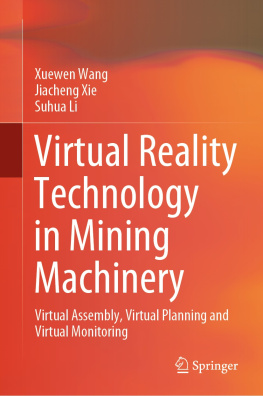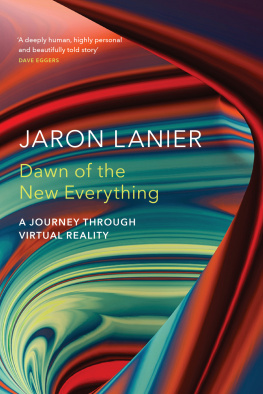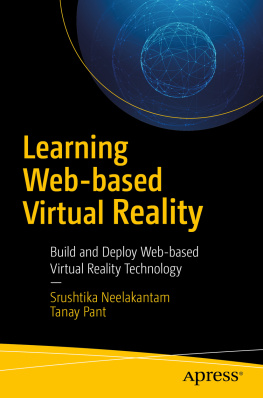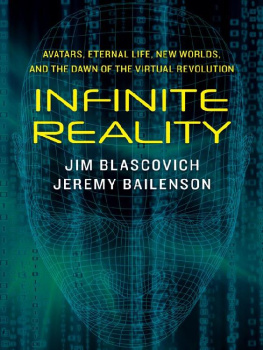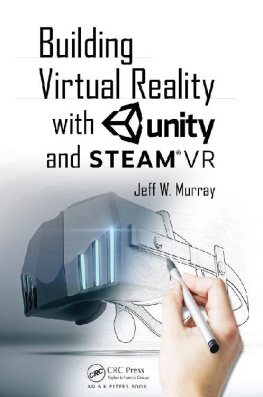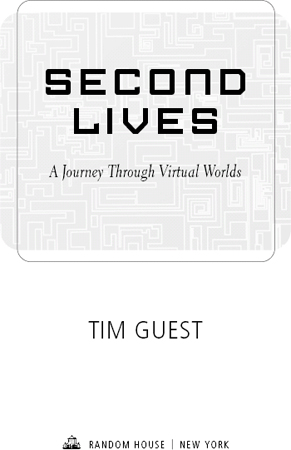Tim Guest - Second Lives: A Journey Through Virtual Worlds
Here you can read online Tim Guest - Second Lives: A Journey Through Virtual Worlds full text of the book (entire story) in english for free. Download pdf and epub, get meaning, cover and reviews about this ebook. year: 2008, publisher: Random House Publishing Group, genre: History. Description of the work, (preface) as well as reviews are available. Best literature library LitArk.com created for fans of good reading and offers a wide selection of genres:
Romance novel
Science fiction
Adventure
Detective
Science
History
Home and family
Prose
Art
Politics
Computer
Non-fiction
Religion
Business
Children
Humor
Choose a favorite category and find really read worthwhile books. Enjoy immersion in the world of imagination, feel the emotions of the characters or learn something new for yourself, make an fascinating discovery.

Second Lives: A Journey Through Virtual Worlds: summary, description and annotation
We offer to read an annotation, description, summary or preface (depends on what the author of the book "Second Lives: A Journey Through Virtual Worlds" wrote himself). If you haven't found the necessary information about the book — write in the comments, we will try to find it.
From Second Life to EverQuest and beyond, here are the computer-generated environments and characters that can easily become more engrossing and fulfilling than earthly existence. With the click of a mouse you can select eye color, face shape, heightyou can even give yourself wings. Your character, or avatar, can build houses, make and sell works of art, earn money, get married and divorced.
In this fascinating and groundbreaking book, Guest meets people who found meaningful love and friendship despite never having met in person, catches up with the companies that have used virtual worlds to make big money, investigates the U.S. militarys massive online global model that trains soldiers to fight anyone anywhere, and travels all the way to gaming-crazed Korea to get a taste for just how big this phenomenon really is.
At first glance, these new computer-generated places seem free from trouble and sorrow. But Guest examines the dark side of this technology too, including the online criminals who plague imaginary worlds, from cyber mafiosos and prostitutes to real hackers and terrorists. It seems that one cannot escape greed, corruption, and human weaknesseven inside a computer screen.
Are these virtual worlds a way to enhance life or to escape it? Guest explores this question personally as he lets himself be transported into myriad parallel universes. By turns provocative, inspiring, and disturbing, Second Lives is a crucial book for this millennium. After all, real life is so twentieth century.
Advance praise for Second Lives
Tim Guest is a young writer with the literary goods. My Life in Orange, his hit memoir of growing up in a commune, looked at his past; his riveting new book, Second Lives, looks at our future: the world of virtual reality and the spellbound people who inhabit it. The book is some kind of revelationby turns compelling, chilling, and illuminating. Curious, intelligent, offbeat, and artful, Guest is at the beginning of a big career.
John Lahr, senior drama critic, The New Yorker, author of
Prick Up Your Ears: The Biography of Joe Orton
Praise from England for Second Lives
An anthropological adventure but also Guests personal voyage . . . a fascinating portrait of rainbow landscapes and their inhabitants.
Time Out London
Rich and colourful . . . an important mapping of a new social frontier.
The Guardian
Remarkably timely.
The Sunday Telegraph
Astonishing.
The Sunday Times
Tim Guest: author's other books
Who wrote Second Lives: A Journey Through Virtual Worlds? Find out the surname, the name of the author of the book and a list of all author's works by series.



